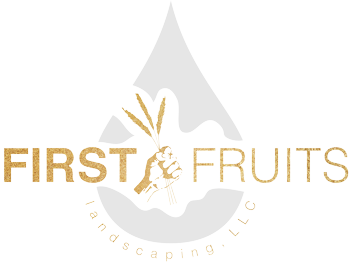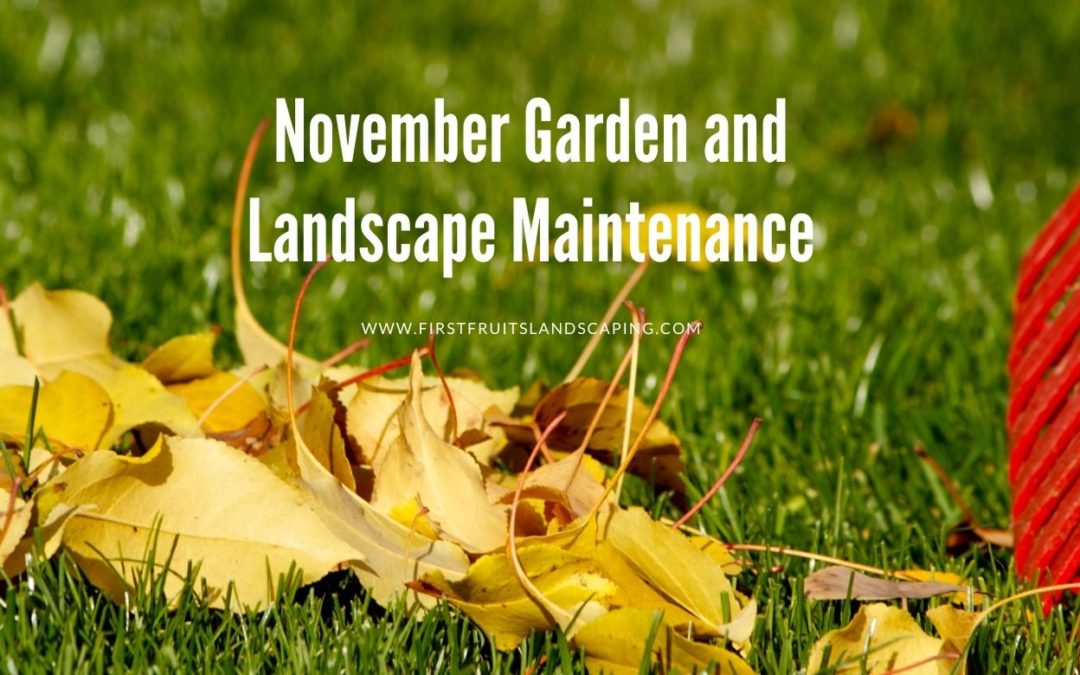Well, summer is definitely over and we have fallen headlong into fall. It seems that just yesterday was our last sunny day for quite some time and now we have typical Pacific Northwest fall weather. But, that doesn’t mean the landscaping has to be put on hold. There’s quite a bit of cleanup and prep to do for the winter season coming up and preparations for next spring. Here’s what to do in November when it comes to your garden, lawn, and landscape maintenance.
Cut down all perennials.
 It never really gets too cold in the Pacific Northwest so digging up bulbs and tubers may or may not make them last longer. It all depends on the type of weather we’re going to have. A lot of people dig up Daliah bulbs and irises and keep them wrapped in sawdust or straw throughout the winter, perhaps in a garden shed or the garage. But this isn’t mandatory. A lot of these bulbs will do just fine as long as you put a healthy dose of mulch over the top for the winter. As long as they don’t freeze, they shouldn’t rot. Rotting is one of the biggest issues when it comes to bulbs and tubers left in the ground. Excess moisture can seep into the bulb and then freezing weather can freeze and ruin the bulb making it thaw out and rot come spring.
It never really gets too cold in the Pacific Northwest so digging up bulbs and tubers may or may not make them last longer. It all depends on the type of weather we’re going to have. A lot of people dig up Daliah bulbs and irises and keep them wrapped in sawdust or straw throughout the winter, perhaps in a garden shed or the garage. But this isn’t mandatory. A lot of these bulbs will do just fine as long as you put a healthy dose of mulch over the top for the winter. As long as they don’t freeze, they shouldn’t rot. Rotting is one of the biggest issues when it comes to bulbs and tubers left in the ground. Excess moisture can seep into the bulb and then freezing weather can freeze and ruin the bulb making it thaw out and rot come spring.
The best thing to do would be to simply cut off all of the perennials down at the base leaving just a little bit of the stalk above the mulch depending on the type of plants. Ground growing Fushias need to be cut off all the way back to just one, spindly little stock, and as poor as it might look, it will definitely reward you, next spring.
Compost or collect?
Depending on how natural you want to go, some people simply prefer to grind up all the leaves and extra grass on top of the lawn letting it rot and compost down into the dirt. The only downside is that it does take a while and looks messy in the process. It’s best to wait until all of the leaves have fallen and then simply rake them up and compost them either in your compost bin or in your city garden waste bin.
Prune any deciduous trees and shrubs.
November is a good time once the leaves have fallen to clean up all of the limbs, prune and trim. Prune back any limbs and branches that cross each other or stretch out toward the middle of the tree, especially fruit trees. You don’t want a Thanh of buds on the tree but those that do stay, you want all the nutrients to go into the actual fruit, next spring.
Plant any bare-root plants and shrubs.
November is also the time to plant bare-root roses, trees, shrubs, as well as any winter vegetables and bulbs and tubers ready for next spring. This will give them a good dormant session over the winter, lots of rain, and will be ready to produce come next year.
Aerate the lawn
November is a great time for aeration as it will relieve soil compaction and allow water, air, and nutrients to reach the root of the grass. This can also eliminate moss. It’s a good idea to put in a fresh coat of fertilizer perfect for dormant weather and fall and winter grasses.
Annuals and containers
Fall and November is a great time to empty and clean out any spent annual container gardens, store clay pots indoors so they don’t collect moisture and freeze over the winter and you can plant colorful annuals such as pansies and ornamental cabbages. If you have terra-cotta pots that have been damaged or you’re just going to throw them away, consider using cracked or broken pieces as drainage in next year’s containers.
Surprisingly, there’s a lot that can go on in the fall. For instance, we wait until December to do an irrigation blowout as the Pacific Northwest is known for having odd, warm snaps in the fall. We want to make sure we don’t need that moisture any longer.
While this might be a lot to do, there is someone that can do this all for you! Call First Fruits Landscaping for all of your Pacific Northwest landscaping, gardening, and yard maintenance needs. Would love to help you design and prepare your garden or landscape for the entire year.
More Great Resources for Homeowners:

